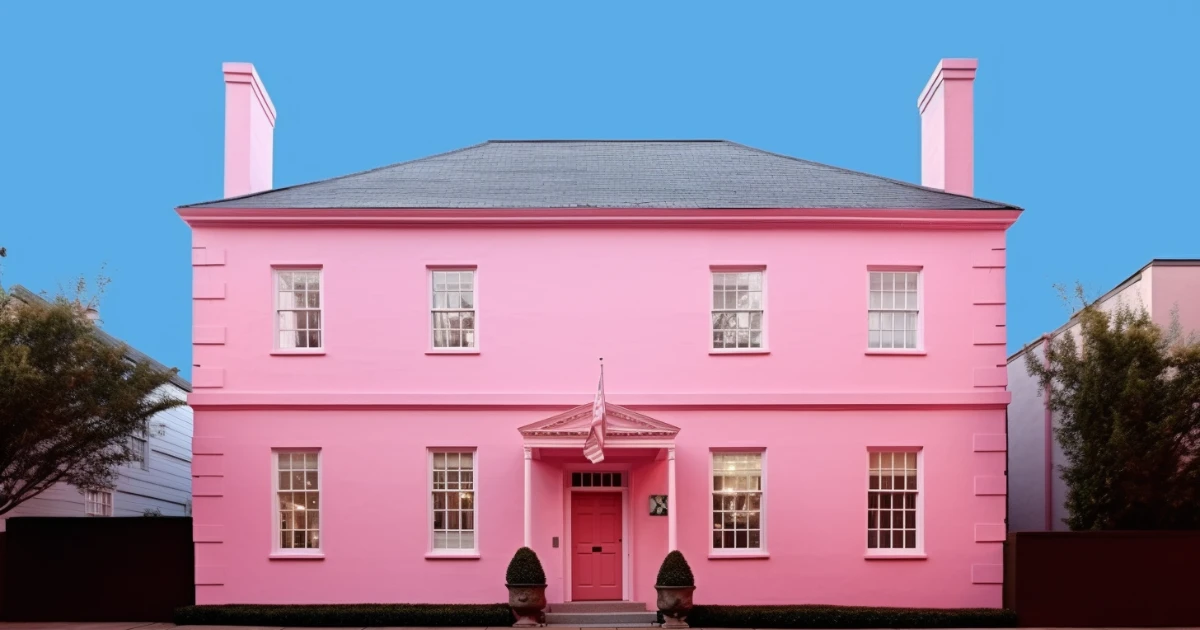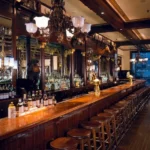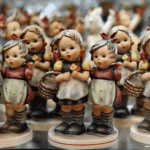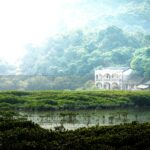Get ready for an awesome trip back in time! The Olde Pink House is like a living history book in the heart of Savannah. From a lively tavern in the old days to a stunning piece of architecture today, it’s got stories and secrets to share. We’ll uncover the colorful characters and events that have made this place a legend, and see how it’s become a symbol of Savannah’s unique charm.
History of the Olde Pink House Savannah GA
If you find yourself wandering the charming streets of Savannah’s Historic District, you’re bound to stumble upon a building that seems to whisper stories of the past: The Olde Pink House. This local landmark, originally called Habersham House, is like a time capsule, holding secrets from Savannah’s earliest days.
The house, with its stately Georgian architecture, was first built back in 1771 for James Habersham Jr., a prominent cotton factor and one of Savannah’s founders. Just imagine, it has stood witness to over two centuries of history! This grand dame even managed to survive the devastating fire of 1796, which tragically swept through much of Savannah, destroying over 200 buildings.
In 1812, the house took on a new role as Planters Bank, marking the beginning of banking in Georgia. This transformation brought some fancy architectural upgrades, like the elegant portico supported by Doric columns and an expansion to the north side.
Following the Civil War, the building saw a variety of uses, transforming into an attorney’s office, a bookstore, and even a charming tea room. Then, in 1968, Jim Williams, also known for restoring the famous Mercer House, purchased the property and gave it some much-needed TLC. But it was in 1971, under the ownership of Herschel McCallar, Jr., and Jeffrey Keith, that the building really started to shine. Their meticulous restoration revealed hidden treasures, like the twin fireplaces in the basement, probably once used for cooking. This marked the birth of The Olde Pink House as a restaurant, a place where history and Southern hospitality intertwine. The restaurant was later purchased in 1992 by William and Elizabeth Balish, who maintained its carefully restored grandeur.
Fast forward to the 21st century, and The Olde Pink House continued to grow under the ownership of Donna Moeckel, daughter of the Balishes, adding the stylish Arches Bar in 2006. And even a fire in 2018, which resulted in a four-month closure, couldn’t dampen its spirit. The building underwent more restoration, ensuring its legacy continues. Today, it boasts 13 unique dining rooms and the cozy Planters Tavern, tucked away in the cellar.
Stepping into The Olde Pink House is like taking a step back in time. You can almost imagine James Habersham, Jr., walking its halls. The building’s transformation from a private home to a bank to a beloved restaurant reflects the ever-changing tides of Savannah’s history. And the ongoing efforts to preserve it speak volumes about the city’s dedication to its heritage.
What Makes The Olde Pink House So Special?
Well, beyond its fascinating past, it’s the little details that make it truly captivating:
- That Pink Hue: You can’t miss the building’s distinctive pink exterior. While there’s some debate about its origin, some historians believe the pink tint appeared after a fire in 1820, where brick dust from the damaged city may have mixed with the paint. Others suggest that it got its rosy makeover in the 1920s, or when local real estate broker Robert Madsen opted for a bolder look in the 1960s.
- Hidden Fireplaces: Imagine, during renovations, they stumbled upon those twin fireplaces tucked away in the basement! It’s a tangible link to the building’s past, offering a glimpse into the lives of those who once called it home.
- Arches Bar: If you’re looking for a touch of modern sophistication, Arches Bar is the place to be. Added in 2006, this chic spot is a testament to the building’s ability to move with the times while still honoring its past.
- A Taste of Georgia: Get ready for a true Southern culinary experience. The restaurant’s menu is a love letter to Georgia’s culinary heritage with modern twists on classic Southern dishes.
- Planters Tavern: For a cozy and intimate atmosphere, head downstairs to Planters Tavern. Located in the cellar, this charming tavern is a hidden gem, perfect for a romantic dinner or a gathering with friends.
So, when you’re in Savannah, make sure to add The Olde Pink House to your must-visit list. It’s more than just a restaurant; it’s an experience, a journey through time, and a reminder that some stories are best told through architecture, ambiance, and a dash of Southern charm.
What is the history of the Olde Pink House Savannah?
The Olde Pink House isn’t just a pretty face; it’s like a history book you can walk through! We already know it’s old, but let’s dive deeper into its story. Built way back in 1771, it started as the Habersham House, named after its owner, James Habersham Jr., a big shot in early Savannah. Imagine the stories those walls could tell! Some even say that secret meetings related to the American Revolution took place here, adding a layer of intrigue to the house’s past.
This house has seen it all – even survived the massive fire of 1796 that wiped out a huge chunk of the city. Talk about resilience! But its story doesn’t stop there. It later became Georgia’s very first bank, Planters Bank, getting a fancy new portico and an extension to the north.
So, when did it get its famous pink makeover? That’s a bit of a mystery. Some say it happened in the 1920s when it transformed into a cute little tea room. Others believe it was much later, in the 1960s.
Today, stepping into the Olde Pink House is like stepping back in time. The interior is beautifully kept, with elegant dining rooms and hidden fireplaces that make you feel like you’re in a period drama. It’s more than just a restaurant; it’s a living, breathing piece of Savannah’s history, offering a delicious meal and a fascinating glimpse into the past.
What is the story behind the pink house?
So, we’ve talked about the charm of the Old Pink House, but what’s the story behind those vibrant walls? Built way back in 1771, this place has seen a lot! It was originally called Habersham House, and just imagine all the stories those walls could tell about Savannah’s early days.
Now, fast forward to the 1800s. Habersham House got a major makeover and a new job title. It became Planters Bank, the first bank in all of Georgia! They even spruced up the place with a fancy portico and an extension on the north side, you know, to make it all official and bank-like.
But the story doesn’t end there. Sometime later, someone decided to give the old bank a fresh coat of paint – and not just any paint, but a bold, eye-catching pink! It was a bold move that paid off, transforming the former bank into a series of different establishments, including a tea room.
Then, in 1971, the Old Pink House decided to try its hand at something new: becoming a restaurant. A man named Jim Williams had a vision, and with the help of talented folks like Herschel McCallar Jr. and Jeffrey Keith, they carefully restored the building and brought that vision to life.
Today, the Old Pink House is still going strong, owned by Donna Moeckel, whose parents used to own it. They even added a cool new bar called Arches Bar in 2006, blending modern style with the building’s historic charm.
Here’s a little recap:
- Built in 1771 as Habersham House.
- Became Georgia’s first bank, Planters Bank, in the 19th century.
- Got its iconic pink makeover sometime after that.
- Transformed into a beloved restaurant in 1971.
- Continues to be a Savannah favorite, showcasing the city’s dedication to its past.
What is the Oldest House in Savannah GA?
Now, you might be thinking about the famous Olde Pink House, and it’s true, this place is old – built back in 1771. It even predates the United States! But as impressive as that is, determining the absolute oldest house in Savannah is tricky. New discoveries happen all the time, and what we consider “oldest” might change.
However, some of the top contenders include:
- The Harper Fowlkes House: This stunning residence, built in 1842 in the Greek Revival style, is widely recognized as one of Savannah’s oldest surviving homes. It offers a captivating glimpse into the city’s past with its beautiful antiques and gardens.
- The Owens-Thomas House: Constructed in 1819, this Regency-style mansion is now a museum offering guided tours that transport visitors back in time. It provides valuable insight into what life was like in early 19th-century Savannah.
- The Isaiah Davenport House: Dating back to 1820, this Federal-style house holds a special place in Savannah’s heart as the first historic house museum. Restored to reflect its original splendor, it even features period-appropriate gardens.
- The Andrew Low House: Built in 1848, this magnificent Italianate-style residence once belonged to Andrew Low, one of Savannah’s wealthiest citizens. The house remained in the family for generations and is now open to the public, offering a peek into the affluent lifestyle of the past.
So, while the Olde Pink House might be a showstopper, it’s crucial to remember that Savannah’s history runs much deeper than one pink-hued landmark. Each historic building, from grand mansions to humble residences, contributes to the city’s unique charm and offers a glimpse into a captivating past.
What do you wear to the Olde Pink House?
You’re heading to The Olde Pink House, a Savannah landmark known for its charm and delicious food. But what’s the dress code like? While the restaurant doesn’t have a rigid set of rules, they do suggest dressing with the elegant ambiance in mind. Think of it as “dressy casual” – you want to look put-together without feeling stuffy.
For men, a nice pair of slacks or chinos paired with a button-up shirt is always a safe bet. You could even add a blazer for a more polished look, especially if you’re dining later in the evening. Ties are definitely optional! Ladies, a dress, skirt, or even tailored pants with a sophisticated top would be perfect.
Remember, you’re going to a fine-dining establishment, so it’s best to avoid overly casual clothes like shorts, t-shirts, and flip-flops. You want your attire to show respect for the historical setting and your fellow diners.
The key is to strike a balance between comfort and style. Choose an outfit that makes you feel confident and ready to enjoy a memorable meal in a beautiful setting. After all, feeling good is always the best accessory!
What is the hidden castle in Savannah GA?
So, you’ve heard whispers of a hidden castle in Savannah, right? Tucked away like a secret in the city’s green spaces, there’s this really cool old building that looks just like a miniature castle. It’s not every day you stumble upon something so unexpected, and that’s part of what makes this place so intriguing.
Built in 1898, this “castle” was actually designed as a powder magazine – a storage facility for explosives – by prominent Savannah architects named Eichburg and Witcover. They could have gone with a simple, utilitarian design, but instead, they created this unique, Gothic-inspired structure with pointed arches, intricate brickwork, and even little turrets. It’s like something out of a fairy tale!
Finding this hidden gem is an adventure in itself. It’s not a grand, well-known landmark but rather a forgotten relic slowly being reclaimed by nature. Imagine yourself on a quest, pushing through overgrown vegetation, and suddenly, you stumble upon this brick castle, seemingly lost to time. Inside, you’ll find two main rooms with vaulted ceilings – a testament to the architectural style known as King Arthur.
Sadly, the powder magazine has been abandoned for years and has fallen into disrepair. While there have been efforts to restore the building and turn it into a park, those plans have, unfortunately, stalled.
The castle’s current state underscores the importance of preserving Savannah’s often-overlooked historical treasures. It stands as a reminder that even small or forgotten structures can hold significant historical and architectural value and that their stories deserve to be remembered and shared.
What is the history of the Pink Lady house?
Let’s journey back to the early 1800s, a time when Savannah was booming. As the city grew, it needed a reliable bank – enter the Pink Lady, then known as Habersham House. They gave the place a major facelift, adding a grand portico with stately pillars and expanding the building to accommodate its new role as Planters Bank, the very first bank in Georgia.
But the Pink Lady wasn’t content with just one career. Over the years, it donned many hats, serving as an attorney’s office, a bookstore, a tea room, and finally, in 1971, the beloved restaurant it is today. Each transformation added another layer to its intriguing past, like chapters in a well-loved novel.
Now, about that eye-catching pink hue. The exact origins are a bit of a mystery. Some believe the pink tint appeared after a fire in 1820, suggesting that brick dust from damaged buildings might have mixed with the paint, giving it that rosy glow. Others point to the 1920s or 1960s as the turning point.
While we may never know the exact story behind the pink, one thing is certain: the Olde Pink House is more than just a building; it’s a testament to Savannah’s enduring spirit, its ability to transform and adapt while still honoring its past. It’s a living reminder that within those old walls, life finds a way to bloom anew, much like the stories and memories that continue to unfold within its pink embrace.
What is the history of the Pink House in Charleston SC?
Nestled on the corner of Church Street in Charleston, South Carolina, stands a charming salmon-pink house, whispering tales of a bygone era. Believed to be the oldest surviving structure in this historic city, the Pink House’s story dates back to the early 18th century, sometime between 1694 and 1712. Its unique color? Likely a gift from time itself, as the Bermuda stone used in its construction has weathered over the centuries, painting it this lovely, distinctive shade.
But the Pink House isn’t just a pretty face; it’s a microcosm of Charleston’s vibrant past. Over the years, it’s played host to a colorful cast of characters and served various purposes. In the 1700s, it operated as a tavern, likely a hub of activity where locals and sailors alike gathered to share stories and unwind. There are even whispers of it being run by a Madame Mincey, rumored to be involved in less-than-reputable dealings, adding a touch of scandal to the house’s history.
By the late 18th century, the property came under the ownership of James Gordon, a prominent Charleston figure. Later, in the early 20th century, the Pink House served as the art studio of Alice R. Huger Smith, a talented artist whose legacy lives on in her evocative portrayals of Charleston’s streets and landscapes.
Today, the Pink House continues to captivate visitors, now housing an art gallery within its historic walls. Despite its relatively small size, a mere 1,007 square feet, the house’s charm lies in its unique architectural details. Look closely, and you’ll notice the gambrel roof, a popular design in the 18th century, adorned with tiles that have stood the test of time.
Exploring the Pink House is akin to embarking on a scavenger hunt through history. Each architectural quirk, every whisper in the walls, adds another piece to the puzzle, reminding us that even the smallest of structures can hold immense historical and cultural significance.
Key Takeaways:
- Built between 1694 and 1712, the Pink House is the oldest surviving structure in Charleston.
- The weathering of Bermuda stone probably explains its distinctive pink hue.
- Over time, the house has served a variety of purposes: a tavern, an art gallery, and even a law office.
- The house is associated with notable figures, like Madame Mincey and Alice R. Huger Smith, who have contributed to its historical and cultural significance.
- The small size, tile gambrel roof, and hidden fireplaces all offer a glimpse into its historic character.
Where Were Slaves Sold in Savannah?
Delving into Savannah’s past requires confronting its complex relationship with slavery. While we don’t have precise locations or detailed records of every transaction, historical context provides clues about where enslaved people were likely bought and sold.
Given Savannah’s status as a bustling port city, it’s highly probable that areas near the Savannah River, particularly wharves and warehouses, played a significant role in the slave trade. Ships laden with captive Africans would arrive, and those in power likely conducted the inhumane business of buying and selling human beings near these points of entry.
As Savannah expanded, so did the slave market. Dedicated auction houses and markets likely emerged closer to the city center, further solidifying the cruel practice within Savannah’s infrastructure. These spaces may have been more formally organized with buildings, offices, and even holding pens – a chilling reminder of the dehumanization inherent in the system of slavery.
Furthermore, it’s essential to remember that slavery permeated almost every aspect of life in Savannah. Transactions involving enslaved people might have occurred in various informal settings, including street corners, taverns, and even private residences.
We also know that Liverpool, England, became a major source of slaves sent to Savannah after the Royal African Company’s demise. This transatlantic connection underscores the global reach and economic interconnectedness of the slave trade, making it highly likely that the locations where these transactions took place were linked to broader networks of commerce and finance.
While specific locations and practices might remain shrouded in the past, ongoing research continues to illuminate the dark history of slavery in Savannah.
What is the history of the Davenport House in Savannah?
The Isaiah Davenport House, built in 1820, is more than just a beautifully preserved building; it’s a symbol of Savannah’s dedication to its past and the power of historic preservation. This Federal-style residence, designed by master builder Isaiah Davenport for his growing family, is a testament to the city’s architectural prowess and its complex social fabric.
But the Davenport House’s story extends far beyond its initial occupants. After Isaiah’s passing in 1827, his wife, Sarah, ingeniously adapted to the changing times, transforming their beloved home into a boarding house. This shift demonstrates the house’s versatility and offers a glimpse into the everyday lives of diverse residents, from merchants and families to enslaved individuals who navigated life within its walls.
The Davenport House holds a unique distinction in Savannah’s history. In 1955, it became the inaugural project of the Historic Savannah Foundation (HSF). Recognizing the structure’s historical and architectural significance, HSF stepped in to save the house from demolition, igniting a citywide movement to preserve Savannah’s architectural treasures. This pivotal moment marked the beginning of a remarkable journey to safeguard the city’s heritage, ensuring that future generations could experience the charm and grandeur of its past.
Today, stepping inside the Davenport House is like taking a step back in time. Now a museum, it offers guided tours that breathe life into the stories held within its walls. Imagine the echoes of laughter, the murmur of conversations, and the quiet moments of reflection that once filled these rooms.
The Davenport House’s story is about more than just bricks and mortar; it’s about recognizing the value of history and understanding that the stories of those who came before us are woven into the very fabric of the places we call home. It serves as a powerful reminder that preserving our past is essential to shaping a richer and more vibrant future.
What is the history of Reynolds Square Savannah?
Nestled in the heart of Savannah’s Historic District lies Reynolds Square, a place where history whispers from every cobblestone and architectural marvel. Established as one of Savannah’s original squares, it offers a captivating glimpse into the city’s earliest days.
While initially dubbed Lower New Square, a rather straightforward moniker, the square’s name was later changed to honor Captain John Reynolds, Georgia’s governor in the 1750s. Reynolds, a figure shrouded in controversy, left a complex legacy on the colony, with some praising his leadership while others criticized his methods.
One of the square’s most striking features is the bronze statue of John Wesley, the founder of Methodism. Wesley, who spent a significant period in Savannah during the 1730s, established America’s first Sunday school, leaving an indelible mark on the city’s religious landscape.
Interestingly, Reynolds Square was once at the heart of an ambitious, albeit unsuccessful, venture to establish a silk industry in Georgia. This endeavor, known as the Filature, reflects the entrepreneurial spirit that has always characterized Savannah.
Stroll through the square today, and you’ll be surrounded by architectural gems that whisper tales of bygone eras. The Olde Pink House, with its Georgian elegance, stands as a testament to the city’s early days. Nearby, the Planters Inn, an architectural masterpiece constructed in 1844, exudes antebellum grandeur. And then there’s the Lucas Theatre, a beloved performing arts venue built in 1921, showcasing Savannah’s enduring love for the arts.
Reynolds Square is a place where history, architecture, and culture intertwine. It’s a space that invites reflection, encouraging visitors to delve deeper into Savannah’s rich past and appreciate the layers of stories held within its boundaries. So, the next time you find yourself wandering through Savannah, take a moment to soak in the ambiance of Reynolds Square – you might be surprised by the whispers of history you uncover.














